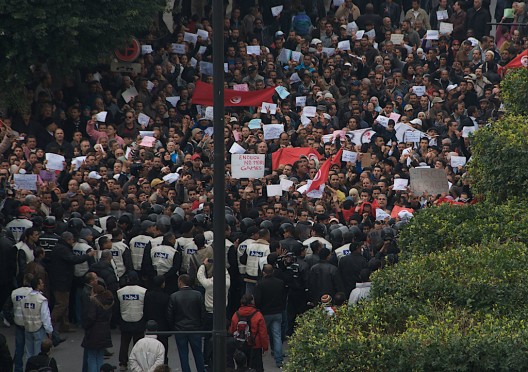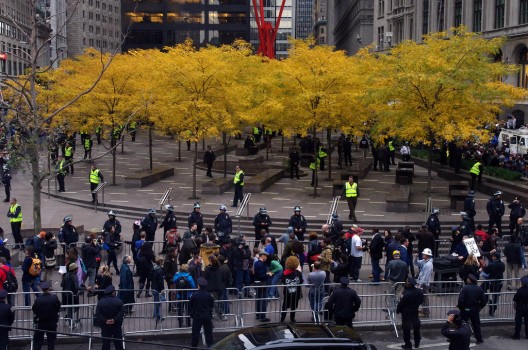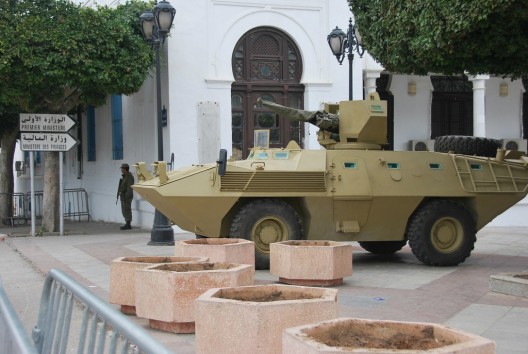Via ArchDaily
-----
de Karissa Rosenfield

Tunisian Revolution via cjb22 on flickr - http://www.flickr.com/photos/cjb22222222/5373435731/
It began on December 17th, 2010, when 26-year-old street vendor named Mohamed Bouazizi drenched himself in paint thinner and lit a match in front of the provincial-capital building in Tunisia. Mannoubia Bouazizi stated, “My son set himself on fire for dignity.” Her 16-year-old daughter added, “In Tunisia, dignity is more important than bread.”
All over the world, the protestors of 2011 have stood-up for fairness and freedom. “Do-it-yourself democratic politics became globalized, and a real live protest went massively viral.” Authoritarian acts of violence and forceful evictions from “public” squares further exposed what the protestors were fighting for. In effort to honor the individuals who have made the greatest impact on our world during these past twelve months, TIME has named the 2011 person of the year as “The Protester”.

Day 36 Occupy Wall Street © David Shankbone
“Public” space has played an important role in this fight for social justice. Occupy Wall Street’s (OWS) eviction from the privately owned public space (POPS) Zuccotti Park, raised awareness on the privatization of the city and the illusion of being public. Architects became actively involved, assisting the development of temporary cities to support the movement, while questioning the “cult of homeownership” and the architect’s role in evolving the idea of housing.

Day 60 Occupy Wall Street © David Shankbone
“Among the ruins left behind by the eviction of bodies and the demolition of tents in lower Manhattan are the ruins of what the philosopher Hannah Arendt called the “space of public appearance.” Ever since the ancient Greeks, who served as Arendt’s model, the right to participate in this space has been conditional on the possession of personal wealth. One of the many contradictory functions of the modern state, addressed politically by unionized workers and by civil rights activists alike, has been to redistribute wealth — that is, to mediate the distribution of resources, services, and value. Any structural alternative must ultimately come to terms with this mediating function.” – Design Observer: Occupy: The Day After

Tanks in front of the Qasba in Tunisia © Gladys Martínez López
Citizens across the world continue to fight for social justice, occupying the streets and inhabiting public space in efforts to achieve significant change. Coverage of the indignados taking back Puerta del Sol in Madrid exclaimed, “The sun has risen. The people cried. The square is ours.”

Indignados taking back the square in Madrid © Jesus Solana
Follow this link to the must-read TIME Cover Story: The Protestor.
Personal comment:
"The protester" will be our last post on rblg for 2011, before we leave to the Alps and the snow for a couple of days!
Best whishes to all.





